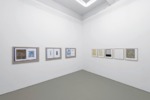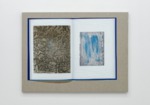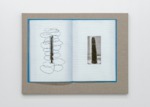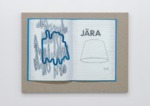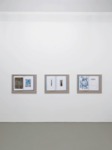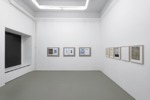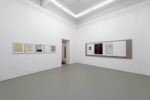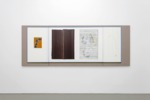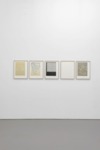Berlin, August 8, 2018
Dear Robert,
When we met yesterday, you told me that you use your left hand for painting and your right hand for writing. Like all the other left-handed children in the GDR, you had to learn how to write with your right hand. Writing is all about rule-following. When we start to learn how to write, the rules are obstacles between us and what we want to say. But eventually, when we learn how to write, we tend to forget about the rules. Writing becomes internalized, a part of ourselves. We forget that writing is a technology – and a very powerful one.
You told me that you are interested in how we see. I think writing is an innovation that forever transformed the way we see and relate to our surroundings. Writing not only translates sound into visual objects, it also separates our senses from each other and establishes a hierarchy among them, where vision is on top. Hearing is a sense that connects us to the world, and sight separates us from it. In that sense, writing has contradictory powers. It helps us to overcome vast distances in time and space, but it also creates a distance. It allows us to view the world as if we did not belong to it, as if it was an object.
Plato, who despised writing as much as painting, also payed attention to its insidious ambiguity. He described it as a ”pharmakon”, both as a remedy and a poison. It is a cure against forgetting, but those who rely on it will themselves become forgetful. His attack on written words and images showed no mercy: “The productions of painting look like living beings, but if you ask them a question they maintain a solemn silence. The same holds true of written words [...], if you ask them what they mean by anything they simply return the same answer over and over again.” Consequently, only people without honour practiced such a thing as writing, Plato himself excluded.
I must say that I’m intrigued by the way you explore the technologies of writing and picture making in your works. Usually, the effect comes after the cause, the copy after the original, the representation after the represented object, and so on. But in your case, the order is reversed. The representation comes before the represented object, the image of the painting is prior to the painting. Maybe this backward movement is your way of trying to recall a lost origin or original? The written signs in your works is a little bit dazed, as if they just did wake up, and haven’t yet decided about what to denote, or if they shall denote anything at all, which isn’t necessary at all, since it is writing and representing as such that is important in your practice, and not what is written. The writing that appears in your works is a writing where the rules not yet has been established. In that way, you allow us to see beyond the actual, and get a glimpse of the possible. Maybe there could be a writing that connects us with the world instead of separating us from it.
Warm regards,
Jens
P.S. I wonder what your works would look like if you used your right hand for painting, and your left for writing.
Letter from Jens Soneryd to Robert Schwark. 10 August–18 August, 2018. Åplus, Berlin.

